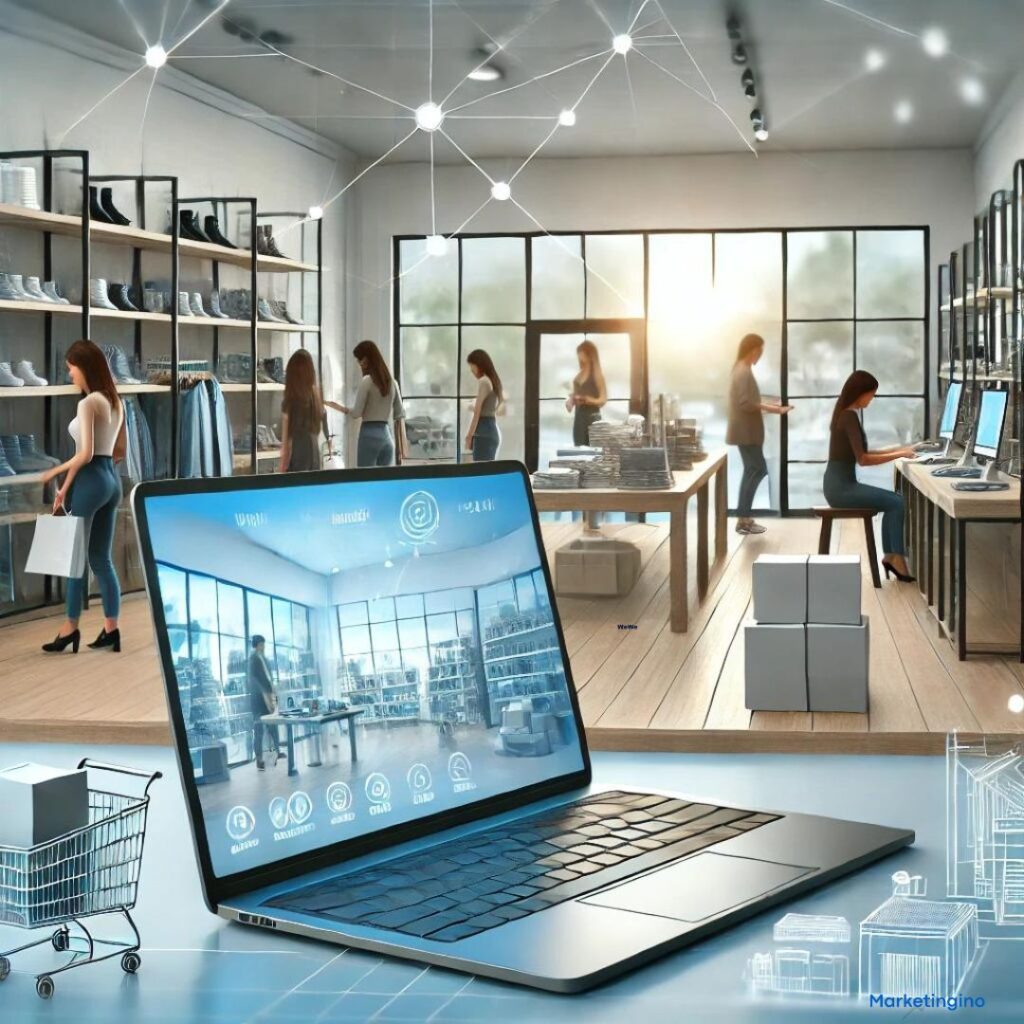The retail landscape has undergone significant transformation with the advent of the internet, leading to the rise of “click-and-mortar” stores. This hybrid business model combines the traditional brick-and-mortar store with an online presence, offering customers the best of both worlds. This article explores the concept of click-and-mortar stores, their benefits, and their impact on the retail industry.
What is a Click-and-Mortar Store?
A click-and-mortar store, also known as “bricks-and-clicks,” refers to a retail business that operates both physical storefronts and an online e-commerce platform. This model allows retailers to reach a wider audience by providing the convenience of online shopping alongside the tangible, in-person shopping experience of a physical store.
How Do Click-and-Mortar Stores Work?
Click-and-mortar stores integrate their physical and online operations to provide a seamless shopping experience:
- Physical Storefronts: Customers can visit the physical location to see, touch, and try products before purchasing. These stores often serve as a place for in-person customer service and support.
- Online Storefronts: Customers can browse and purchase products online, with the option for home delivery or in-store pickup. The online platform provides detailed product information, reviews, and a broader selection of items.
- Integrated Systems: Inventory, sales, and customer data are synchronized across both channels, ensuring consistency and efficiency in operations.
Benefits of Click-and-Mortar Stores
- Expanded Reach: Retailers can attract both local customers who prefer in-store shopping and remote customers who prefer the convenience of online shopping.
- Enhanced Customer Experience: Customers enjoy the flexibility to shop in their preferred manner, whether in-person or online, leading to higher satisfaction and loyalty.
- Increased Sales Opportunities: The combination of online and offline sales channels can lead to higher overall sales and revenue.
- Omnichannel Integration: Retailers can offer services like buy online, pick up in-store (BOPIS) and in-store returns for online purchases, enhancing convenience and driving foot traffic to physical stores.
Challenges and Limitations
While click-and-mortar stores offer numerous advantages, they also face some challenges:
- Operational Complexity: Managing both online and offline operations requires robust systems and processes to ensure seamless integration and efficiency.
- Inventory Management: Synchronizing inventory across channels can be challenging, requiring accurate tracking and real-time updates.
- Cost: Maintaining physical stores along with an online presence can be costly, requiring investment in infrastructure, technology, and staffing.
The Future of Click-and-Mortar Stores
The future of retail lies in the integration of online and offline experiences. Advancements in technology, such as augmented reality (AR) and artificial intelligence (AI), will further enhance the click-and-mortar model. Retailers will continue to innovate, offering personalized and immersive shopping experiences that cater to the evolving preferences of modern consumers.
Click-and-mortar stores represent the evolution of retail, combining the strengths of physical and online shopping to create a versatile and customer-centric business model. By leveraging the advantages of both channels, retailers can provide a comprehensive shopping experience that meets the diverse needs of their customers. As the retail industry continues to evolve, click-and-mortar stores will play a pivotal role in shaping the future of shopping.




